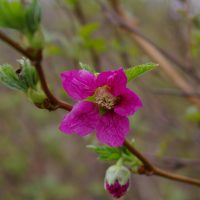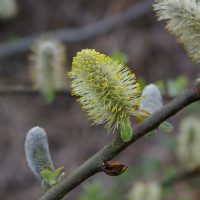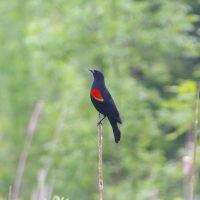The Union Bay Natural Area is a public wildlife area, natural restoration laboratory, and an important habitat next to Lake Washington. At 74 acres, with 4 miles of shoreline, it is the second largest natural system left on the lake. Considered one of the best bird-watching sites in the city of Seattle, over 200 species of birds have been sighted here. Some long-time residents call this area the Montlake Fill.
The Union Bay Natural Area is managed by UW Botanic Gardens to maintain and enhance plants, wildlife and landscape values while serving as an outdoor laboratory for research, teaching and public service. Questions about the Natural Area should be directed to uwbg@uw.edu or 206-543-8616.
At the east side of the Center for Urban Horticulture is Yesler Swamp, a part of the Union Bay Natural Area.
Explore
Take a Virtual Walk through the Union Bay Natural Area.
Explore a slideshow (10MB) by Dr. Kern Ewing of the history and restoration of the Union Bay Natural Area.
Click on thumbnail to view a larger image or to scroll through gallery.
Research Articles
Long-Term Effects of Initial Site Treatment on Fescue in a Novel Prairie Ecosystem (Washington)
Nate Hough-Snee, Jonathan D. Bakker and Kern Ewing
In prairie restoration, site preparation is a key step in altering environmental conditions to favor the establishment of desirable plants over invasive species. In 2008, we revisited prairie plots restored in 1994 to examine the long-term impacts of initial site treatments on the survival and expansion of planted fescues (Festuca spp.). To enhance fescue plantings and reduce invasive weeds over the long term, we recommend the use of fire and plant removal as site preparation treatments. We also encourage research into soil impoverishment as a means of lowering nutrient availability and giving fescue a competitive advantage.
Ecological Restoration. March 1, 2011 vol. 29 no. 1-2 14-17
Parking lot to Wet Prarie
UW student Nate Hough-Snee presented a poster at the Society of Wetland Scientists annual meeting titled Parking lot to wet prairie: a vegetation assessment of ecological restoration at the Union Bay Natural Area, Seattle, WA. Co-authors include Lexine Long, Lacey Jeroue and Kern Ewing.
Abstract
In 2008, we examined the vegetation of a former parking lot that, ten years ago, was restored to wet prairie with mounding and vegetation installation in the Union Bay Natural Area (Seattle, WA). In wetland restoration mounding is a technique commonly used to create microhabitats of differing resource availability on top of and adjacent to mounds. This microtopography creates environmental filters for vegetation based on plant adaptations to flooding stress and tolerance to drying. Thirty sample mounds were randomly selected and divided into two half-meter plots on top of each mound and one half-meter plot in each of the northerly and southerly inter-mound spaces, for a total of 120 plots. Each plot was surveyed for elevation and measured for soil water content, while we described vegetation by percent cover. Because sampling was not independent, we used permutation procedures for analyses, finding that vegetation differs significantly between mound and inter-mound spaces while soil moisture is driven by mound elevation and position. Mounds located in wetland zones had more non-native plants on top of the mounds than the adjacent saturated inter-mounds that were largely comprised of native hydrophytes. Restoration efforts were complicated by competition from invasive plants that played a role in community development regardless of mound zone. We conclude that the resulting novel wet-prairie vegetation community may be driven by microtopographic variation and that the corresponding environmental filters allow native vegetation to persist and establish across this novel ecosystem while hypothesizing that invasive species persist due to competitive advantages.
 Learning from a Landfill
Learning from a Landfill
Justin Howell and Nate Hough-Snee
The Union Bay Natural Area shares a unique history with the teaching and practice of ecological restoration at the University of Washington. From an intact ecosystem to a waste repository to an outdoor laboratory, the UBNA has changed dramatically and will undoubtedly continue to do so over time. There are numerous goals for the site: to monitor vegetation communities and assess how succession proceeds within systems, to look at how subsidence alters hydrology across the landscape and to continue adaptively managing existing restoration projects to ensure project success.
SERNews (23:2), the newsletter for the Society of Ecological Restoration International.











